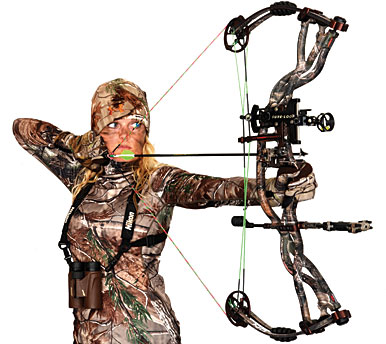Fine-Tune Your Objective: The Science Behind Compound Bow Stabilizers
Fine-Tune Your Objective: The Science Behind Compound Bow Stabilizers
Blog Article
Optimizing Your Archery Performance With the Right Compound Bow Stabilizer: an Extensive Summary
One important yet often-overlooked element in boosting accuracy is the compound bow stabilizer. By recognizing the nuances of choose and enhancing a compound bow stabilizer, archers can adjust their devices to raise their capturing experience to new levels of proficiency and control.
Significance of Bow Stabilizers in Archery

In addition, bow stabilizers assist in balancing the weight distribution of the bow, which can enhance the archer's security while shooting and intending. By adding weight to the front of the bow, stabilizers can decrease the quantity of torque experienced upon launch, resulting in a smoother and a lot more controlled shot - compound bow stabilizer. This weight circulation additionally helps in holding the bow consistent for a longer duration, allowing the archer to intend a lot more properly
Types of Substance Bow Stabilizers
When considering the various kinds of compound bow stabilizers offered, it is important to understand their distinct attributes and functions to identify the most suitable option for making best use of archery efficiency. The most typical types of compound bow stabilizers consist of sidebar stabilizers, front stabilizers, and back stabilizers. Back stabilizers, likewise called rear stabilizers, are placed to the back of the bow and aid in counteracting the weight of other accessories, resulting in boosted stability and constant intending.
Aspects to Think About When Choosing
In evaluating compound bow stabilizers, recognizing the distinctive attributes and features of each kind is essential for making an educated decision on the most suitable choice to boost archery performance. When picking a stabilizer, one have to take into consideration the weight of the stabilizer itself. While a heavier stabilizer can supply even more security by reducing the bow's movement, it may likewise create exhaustion during long shooting sessions. Balance is one more important variable to consider. The stabilizer's length and layout substantially influence the bow's equilibrium, impacting the shooter's ability to hold constant goal. Additionally, the product of the stabilizer can influence its performance. Carbon fiber stabilizers are lightweight and soak up vibrations well, boosting precision. Moreover, the number and adjustability of dampeners on the stabilizer can tweak its efficiency by minimizing sound and shock upon launch. By meticulously assessing these aspects, archers can choose a compound bow stabilizer that straightens with their shooting design and optimizes their total efficiency on the archery range.
Installment and Adjustment Tips
For optimal performance and accuracy in archery, understanding the installation and adjustment of your bow stabilizer is vital. Proper installment begins with attaching the stabilizer to the bow's riser, guaranteeing it site here is strongly protected. Most stabilizers feature installing hardware for easy installment, yet it's important to follow the supplier's standards for the specific model you have. When affixed, changing the stabilizer entails locating the best balance in between weight distribution and length. Experiment with different combinations until you attain the wanted feeling and stability.
When readjusting the stabilizer, start with tiny step-by-step changes instead than drastic modifications. Pay attention to how the bow responds to adjustments in stabilizer settings and make changes explanation appropriately. Consistently inspect the stabilizer's tightness and general problem to ensure it continues to operate efficiently.
Maintenance and Treatment Standards

It is also essential to save your bow with the stabilizer in a safe and safe and secure area when not in usage. Following these upkeep and treatment guidelines will certainly help you obtain the most out of your bow stabilizer and enhance your overall archery efficiency.
Final Thought
Finally, selecting the right substance bow stabilizer is essential for maximizing archery efficiency. Understanding the relevance, types, variables to take into consideration, setup and change suggestions, along with maintenance and treatment guidelines can greatly influence one's accuracy and consistency in capturing. By selecting a stabilizer that matches individual demands and preferences, archers can improve their total efficiency and achieve much better outcomes on the variety or in competitors.
Bow stabilizers play an important role in boosting an archer's accuracy and uniformity by lowering vibrations and supporting the bow additional hints throughout the launch of an arrow - compound bow stabilizer.Furthermore, bow stabilizers aid in stabilizing the weight distribution of the bow, which can enhance the archer's security while intending and shooting. The most common types of substance bow stabilizers include sidebar stabilizers, front stabilizers, and back stabilizers. Back stabilizers, additionally called rear stabilizers, are installed to the back of the bow and help in counteracting the weight of other accessories, resulting in enhanced stability and consistent aiming. When picking a stabilizer, one must consider the weight of the stabilizer itself
Report this page